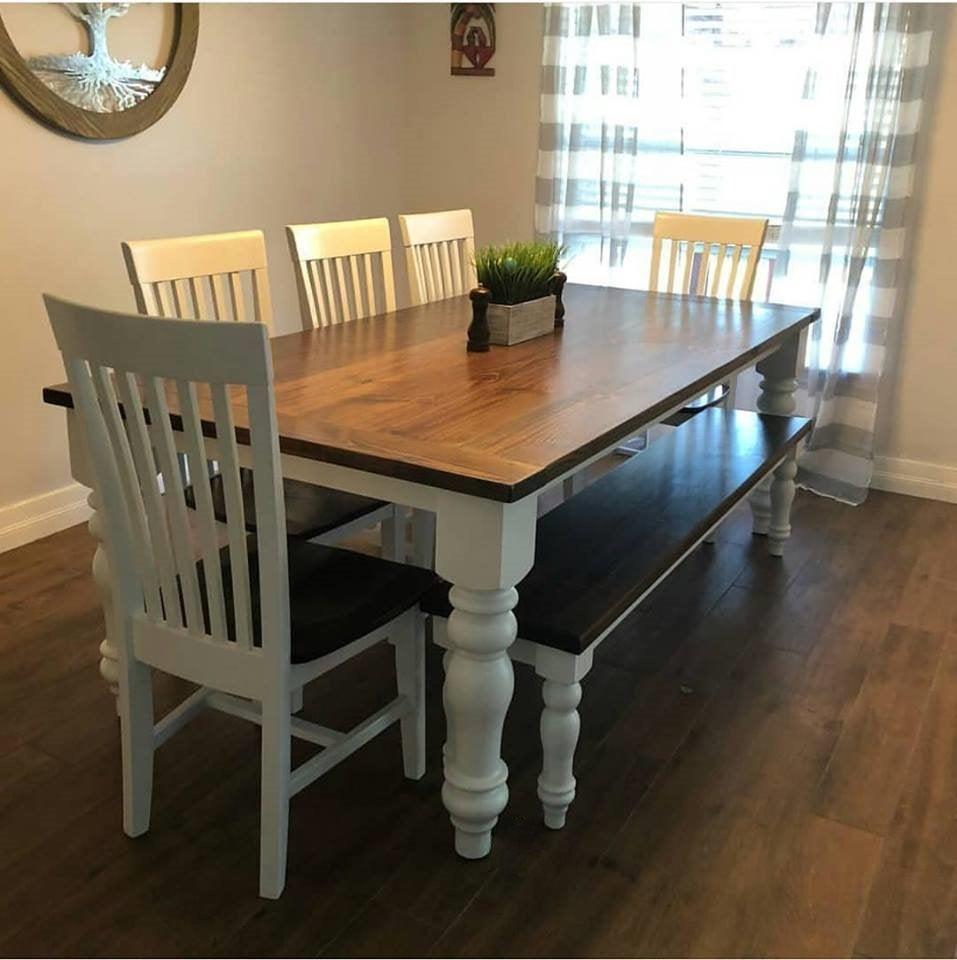Dining Room Table Legs: What to Think about Before You Purchase
Dining Room Table Legs: What to Think about Before You Purchase
Blog Article
A Comprehensive Take A Look At Table Leg Styles: Discovering the Ideal Suit
Selecting the appropriate dining table leg design is important for both visual appeal and sensible functionality. For those with bigger tables, trestle legs ensure strong support, whereas hairpin legs present a mid-century modern ambiance with their minimal layout. The x-shaped legs blend contemporary style with enhanced security.
Conventional Four Legs
Among the numerous kinds of dining table leg styles, the standard four-leg layout remains a timeless option for lots of families. This timeless arrangement offers a harmonious blend of functionality and aesthetics, making it a perennial favorite. Four legs provide balanced support, ensuring the table remains secure and efficient in bearing substantial weight. This is particularly beneficial for homes that often host large gatherings or utilize their table for numerous objectives, such as job or crafting.
From an aesthetic perspective, the typical four-leg layout can be quickly adapted to numerous indoor styles. Whether crafted from wood, steel, or a combination of materials, these legs can be delicately carved, sleek and minimalistic, or anything in between. Their versatility allows them to enhance both rustic and contemporary setups flawlessly.
Additionally, the straightforward framework of the four-leg style helps with convenience of motion and placement within an area. Unlike more facility bases, this style minimizes blockages, providing enough legroom for diners. In recap, the standard four-leg dining table leg design marries withstanding elegance with sensible functionality, making it a sharp choice for those looking for both form and feature in their dining furnishings.
Stand Base
Frequently celebrated for its sophisticated and space-efficient layout, the pedestal base is a prominent choice to the standard four-leg configuration in dining table leg styles. Without edge legs, restaurants are afforded better liberty of movement, making it an optimal option for round and oblong tables that advertise more intimate and comprehensive gatherings.
The central column itself supplies a canvas for complex designs and imaginative expressions, including an element of aesthetic rate of interest beneath the table. In recap, the pedestal base incorporates performance with style, making it an improved and useful option for varied dining settings.
Trestle Legs
Trestle legs offer a durable and classic foundation for eating tables, defined by their straight cross-bracing and durable support beams. Originating from middle ages times, this design has evolved yet maintained its important framework, making it a perennial fave in both traditional and modern setups. The main trestle light beam, commonly sustained by 2 or more vertical articles, offers phenomenal stability, permitting for larger table lengths without the demand for additional legs.
A considerable benefit of trestle leg tables is the sufficient legroom they supply. Unlike tables with four corner legs, the lack of obstructions at the table's sides provides unimpeded area for chairs and restaurants, enhancing comfort and access. This makes trestle tables perfect for suiting bigger gatherings, whether in a dining space or a reception hall.
The aesthetic flexibility of trestle legs is notable. Readily available in a variety of materials such as wood, metal, and composite, they can be completed to enhance a wide variety of interior styles. From rustic farmhouse to smooth modern-day layouts, trestle legs can be tailored to suit individual tastes. Their enduring charm and practical advantages make trestle legs an engaging option for those looking for both design and usefulness in their eating table.
Hairpin Legs

The allure of barrette legs lies in their simpleness and convenience - dining room table legs. Available in a series of materials, including steel and brass, they can be ended up in numerous shades to enhance various indoor styles. Whether coupled with a rustic wood table top or a modern glass surface, barrette legs effortlessly mix performance with a touch of vintage appeal
Sturdiness is an additional significant attribute of barrette legs. In spite of their fragile look, these legs are crafted to birth substantial weight, making certain the dining table stays stable and protected. In addition, they are relatively easy to install, making them a popular choice this hyperlink for do it yourself enthusiasts and specialist furnishings manufacturers alike.
X-Shaped Legs

Created from materials such as steel, timber, or a mix of both, X-shaped legs can be tailored to match different look here layout preferences. Steel legs usually lend a smooth and commercial feel, suitable for loft-style apartments and contemporary eating rooms. On the other hand, wood X-shaped legs provide a warmer, a lot more rustic appeal, suitable for farmhouse or eclectic insides. The versatility in materials enables home owners to customize their dining tables to better fit their general layout system.
In addition, the design behind X-shaped legs ensures even weight distribution, reducing the risk of wobbling and improving toughness. This makes them specifically fit for bigger table that call for added assistance. Basically, X-shaped legs mix functional engineering with contemporary appearances, making them a classic selection for varied eating atmospheres.
Final Thought
A detailed understanding of dining table leg styles reveals the distinct characteristics and advantages of each layout. Standard 4 legs provide stability and classic allure, while stand bases offer legroom and a streamlined appearance. Trestle legs make certain durable assistance for larger tables, and hairpin legs present a mid-century modern-day visual. X-shaped legs special info combine contemporary layout with improved stability. Selecting the ideal leg style guarantees both functional and visual fulfillment in any eating area.
Report this page